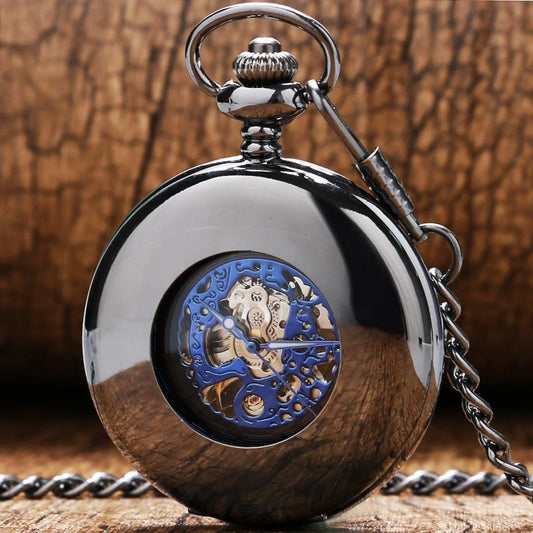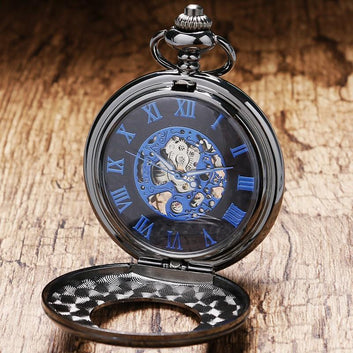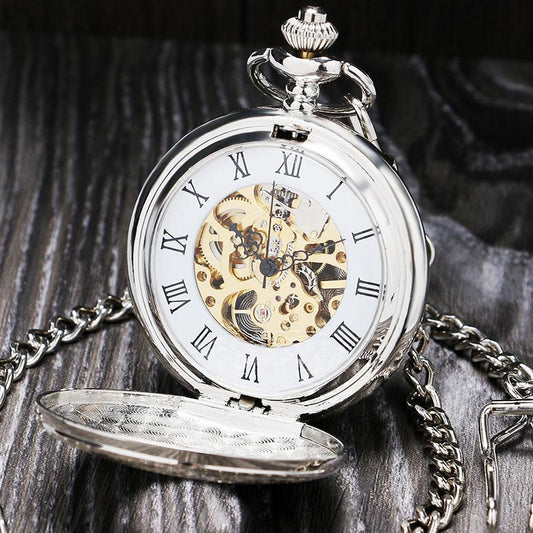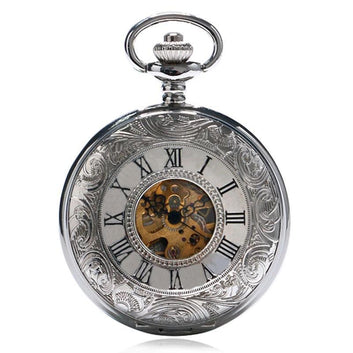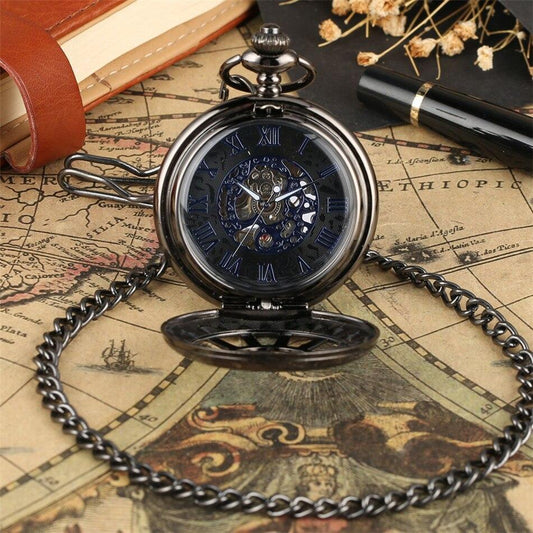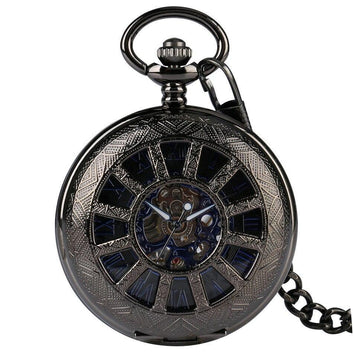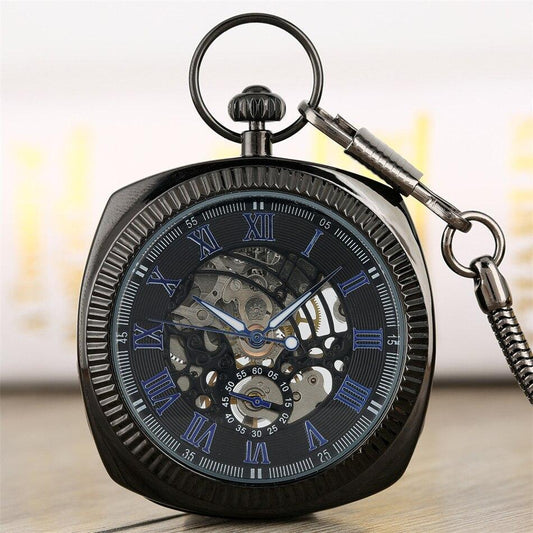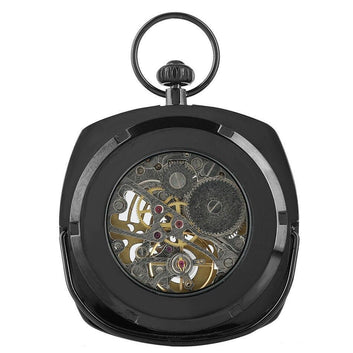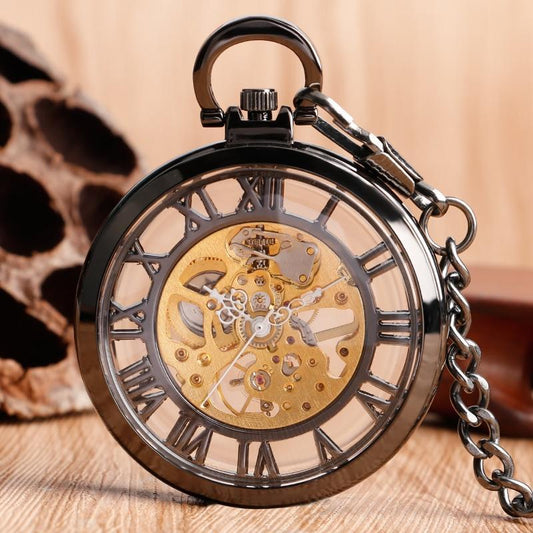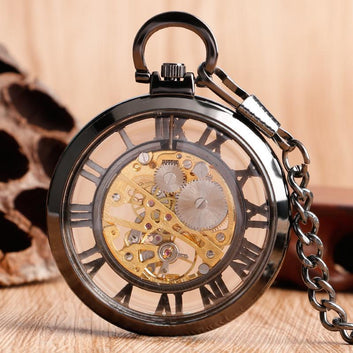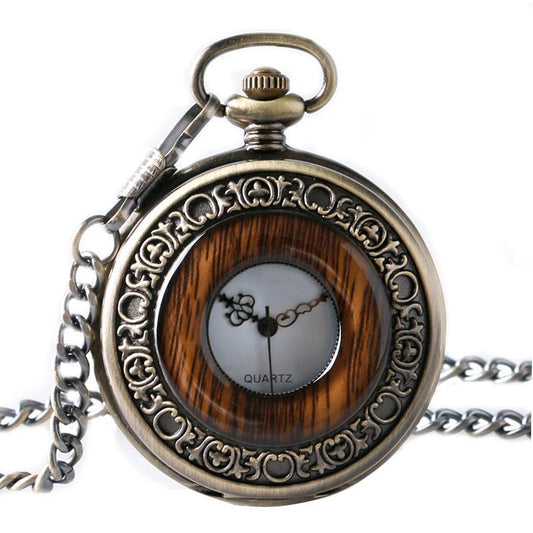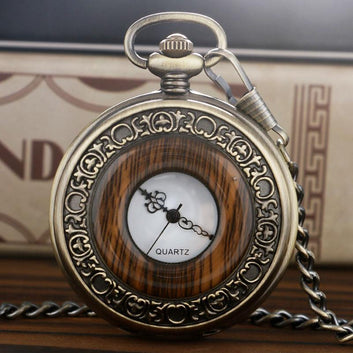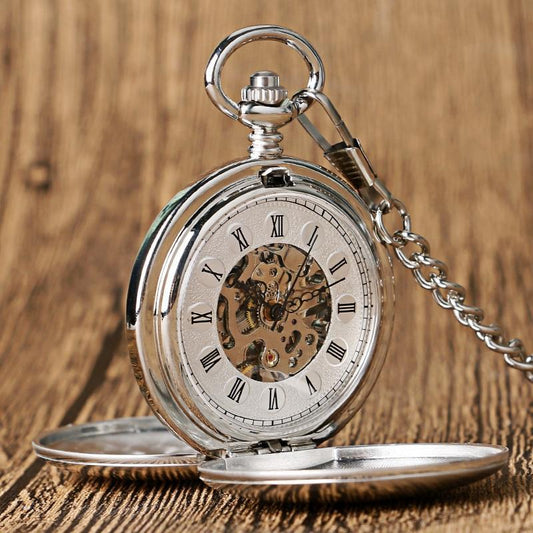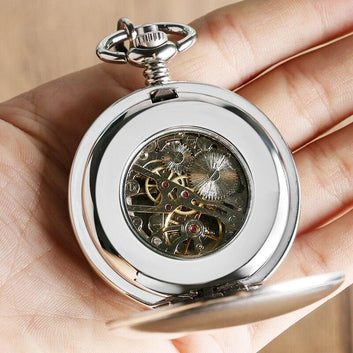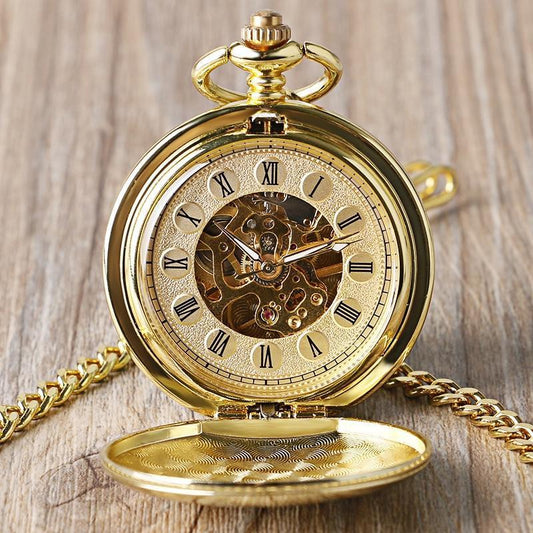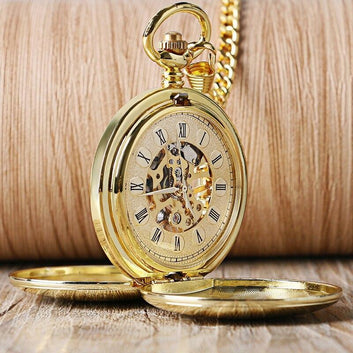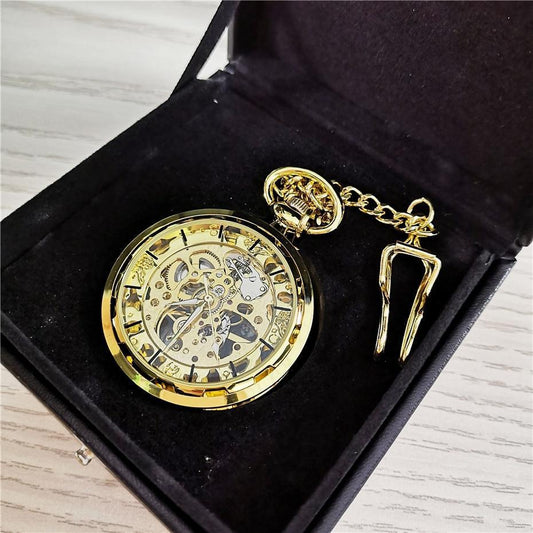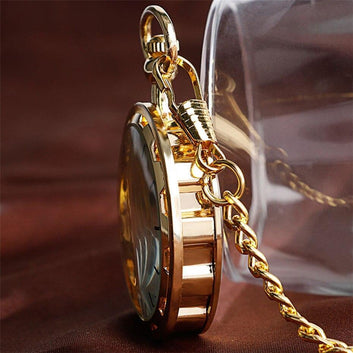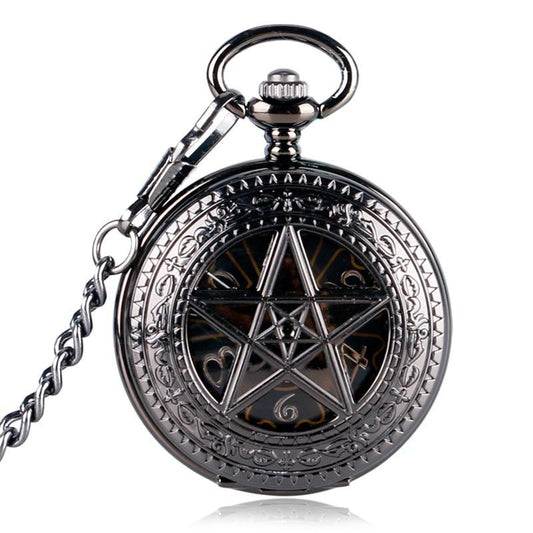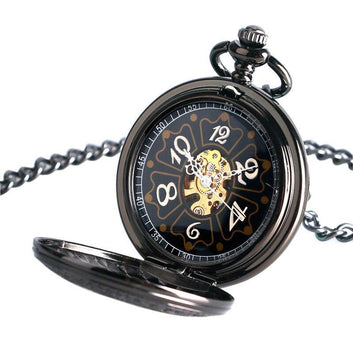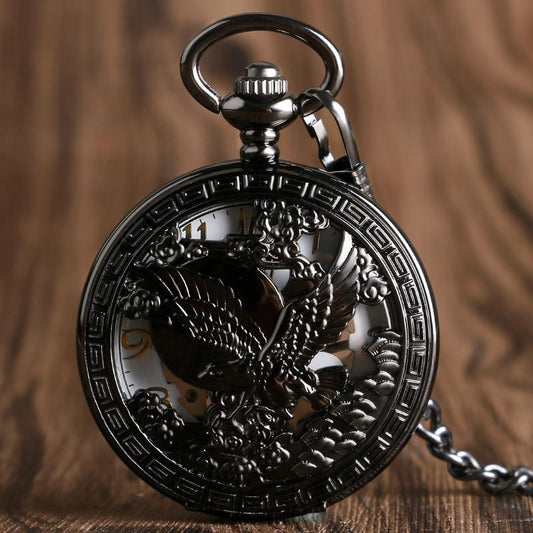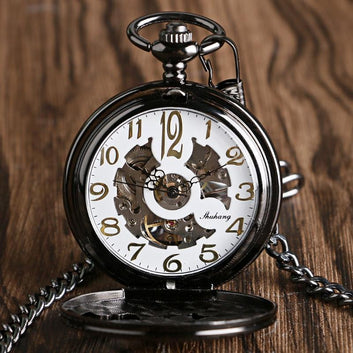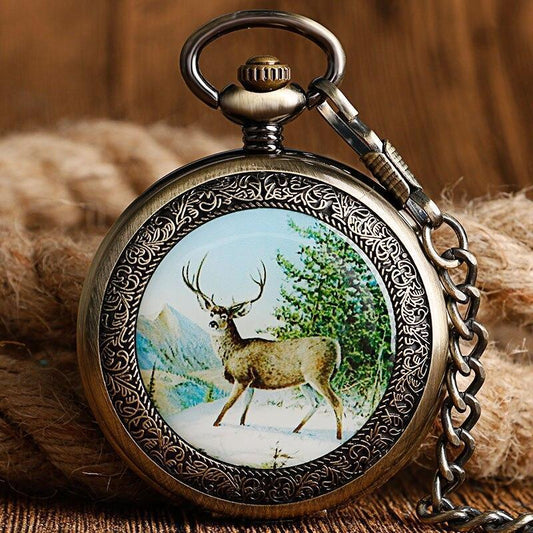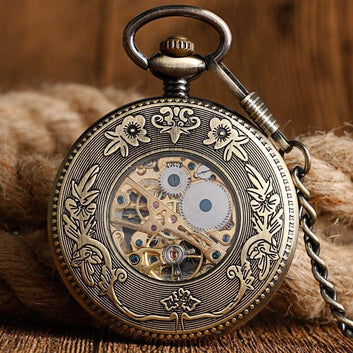- Featured
- Best selling
- Alphabetically, A-Z
- Alphabetically, Z-A
- Price, low to high
- Price, high to low
- Date, old to new
- Date, new to old
Mechanical Pocket Watch
We have the perfect retro gift that will make you feel proud to be an American. Our mechanical pocket watches are available in different display cases. We also have a limited edition version that is only available for a few months every year.
Our mechanical pocket watches are hand-made by skilled artisans. They are built to last for generations and can be passed down through the family. The perfect gift for any occasion or just because!
Take a look at our entire collection of mechanical pocket watches! Get one today while supplies last!
What is a mechanical pocket watch?
- A mechanical pocket watch is a watch that uses a clockwork mechanism to measure the passage of time, as opposed to quartz clocks that work electronically via a small battery, or radio clocks, which are quartz.
- mechanical clock is driven by a mainspring that must be wound either periodically by hand or via a self-winding mechanism. Its power is transmitted through a series of gears to drive the balance wheel, a weighted wheel that will swing back and forth at a constant speed.
- A device called an escape releases the clock wheel to move a small amount forward with each swing of the balance wheel and move the hands of the clock forward at a constant speed. Relaxation is what makes the 'ticking' sound that one hears in a mechanical watch work.
- Mechanical clocks evolved in Europe in the 17th century from spring-driven clocks that appeared first in the 15th century.
How does a mechanical pocket watch work?
The internal mechanism of this mechanical pocket watch, excluding the face and hands, is called movement. All mechanical pocket watches have these five parts:
- A mainspring that stores mechanical energy to drive the watch.
- A gear called a wheel train that has the dual function of transmitting the power of the mainspring to the balance wheel and combining the turns of the balance wheel to obtain units in seconds, minutes, and hours. A separate part of the gear lever, called keyless work, allows the user to wind up the mainspring and allows the hands to move to set the time.
-
A balance wheel that swings back and forth. Each turn on the balance wheel takes exactly the same time. This is the timing element of the watch.
-
An escape mechanism that has the dual function of keeping the balance wheel vibrating by giving it a push at each oscillation and allowing the clock gear to move forward or 'escape' by a certain amount with each oscillation. The periodic stop of the gear at the escape gives the 'ticking' sound from the mechanical clock.
-
An indicator wheel, usually a traditional dial with rotating
How To Buy a Mechanical Pocket Watch
A mechanical pocket watch is a luxury that few people can afford. Picking out the right one for you can be difficult and expensive, but it’s a worthwhile investment - and here's why.
You'll find that most new watches are quartz, which means they rely on an electrical current to function. These watches are very simple and easy to read, but they don't have any of the personality or character that a mechanical pocket watch has. You'll also find them to be less precise in timekeeping, or even unable to keep accurate time at all. However, if you're looking for a great way to tell time with style, this is your best bet!
The following article will guide you through the process of finding your perfect mechanical pocket watch. From choosing the right face to choosing the correct case material, we’ve got you covered!
What is a Pocket Watch?
A mechanical pocket watch is a timepiece that has to be wound in order to function. These watches rely on the movement of gears and springs to work, which makes them more accurate and complex than their modern counterparts. A wristwatch, on the other hand, uses an electric current to keep time.
Many people prefer a mechanical watch because they have a unique personality while also being stylish - not all of them are white or silver, so you're able to find one that suits your style perfectly!
The Different Types of Watches
First, you'll need to decide which type of watch to purchase. You'll find that there are two broad categories for watches: Mechanical and Quartz. Quartz watches use an electrical current to function, so they're easy-to-read and simple - but they don't have any of the character or personality that a mechanical pocket watch has.
The following article will guide you through the process of finding your perfect mechanical pocket watch. From choosing the right face to choosing the correct case material, we’ve got you covered!
Mechanical Pocket Watch
Mechanical pocket watches are a luxury few people can afford, and picking the right one can be difficult and expensive. However, they're worth the investment if you want to add some personality or character to your wardrobe. Here's why: Quartz watches are less precise and only rely on an electrical current to function - mechanical watches are more complicated and require visual inspection of their functions. While quartz watches are easy-to-read, they don't have any of the personality or character that a mechanical watch has. This article will guide you through the process of finding your perfect mechanical pocket watch. From choosing the right face to choosing the correct case material, we've got you covered!
Quartz Watch
Quartz watches are the most common type of timepiece on the market today. Quartz movement is powered by a battery, which means it's very accurate, but it also lacks personality and flair. The only thing that distinguishes this watch from any other quartz watch is the brand name.
If you're looking for something with personality and character, buy a mechanical pocket watch! They're not as accurate as quartz watches, but they'll never let you down in terms of style and elegance. You can't go wrong choosing a mechanical pocket watch over a simple quartz one that you'll grow tired of in no time!
How to Pick the Right Pocket Watch for You
Choosing the right pocket watch can be daunting. There are so many different options and factors to consider, from material to face design. But if you're in a hurry, it may be enough to explore your basic options:
1. Mechanical vs. quartz watches
Mechanical watches are known for their accuracy, craftsmanship, and personality. Quartz watches are more easy-to-read and less expensive than mechanical watches. They also have the downside of being less accurate or even unable to keep accurate time at all.
2. Size of the case
The size of your watch case is important because it determines how large your watch will look on your wrist. You'll want a case that's proportionate with your arm size - otherwise, you'll end up with an oversized or undersized watch that looks out of place!
3. Functionality
If you want a suitable everyday watch, go for one with a smaller face and simple design - this way it won't get in the way during daily tasks such as typing or cooking without soaking up too much grease or grime! For something more formal like a dress watch or an activity tracker, you may prefer something larger and fancier.
The Style of the Face
The first step in choosing your perfect pocket watch is deciding on the style of face you want. Do you want a traditional watch with Arabic numerals? Or do you prefer Roman Numerals? There are even watches available with the date function, something that's never been seen before!
If you're looking for something that's a bit more subtle, we recommend a watch with a simple face. If you’re looking for something to have personality, go for one with an amazing design. The choice is yours!
Metal Quality
One of the first things you'll want to do while searching for your perfect watch is to think about the metal quality. While stainless steel is a popular choice, it will never be as durable or stylish as something made with gold or platinum. Gold will always stand the test of time and has an elegant look that other metals just can't compare to. Platinum is a close runner-up and will hold its value better than gold over time. However, if you're looking for a more budget-friendly option, stainless steel is a solid pick!
Display Type
A mechanical pocket watch can come in many different styles and types, from the traditional circular face to a square one. If you're looking for a more modern look, a round face will suit you best. The most popular display is the one with Roman numerals denoting 12 hours apiece, which is easy to read and has been used for centuries.
Conclusion
A pocket watch is a timepiece that is carried in a pocket, as opposed to a wristwatch, which is strapped to the wrist. Pocket watches are often used by people who need to know the time (such as doctors, nurses, construction workers, military personnel, and police officers) while they are engaged in work that prevents them from looking at a clock.
A pocket watch generally has a metal case and a chain or strap so that it can be secured to the wearer's clothing. The face of it almost always carries the hours marked on 12. On the back of the watch is usually an opening so as to allow a chain or cord to be threaded through and secured to the wearer's clothing, which serves to prevent the watch from being dropped. When not in use, the chain is usually stored in a protective metal container.
An old pocket watch is much more durable than a wristwatch, because it is not exposed to the knocks against the body that a wristwatch experiences. The case of a pocket watch is thicker and stronger than that of a wristwatch. The face of a pocket watch is made from glass so as to allow people to see the time easily. The glass cover also protects the face from scratches and damage.
An antique pocket watch is carried in a pocket, hence its name. It is attached to a chain or strap so that it can be secured to the wearer's clothing. Most people used to keep their pocket watches in their pockets when they weren't using them. The chain was used to secure the watch to the wearer's clothing so that it was not lost or damaged. A pocket watch has been around for hundreds of years and they have been used by many different people in many different situations and places.
A pocket watch is used to tell time on a large scale, but it can also be used on small scales as well. For example, some people use a pocket watch in order to time how long they have been doing something such as driving or cooking. Some sports teams also use a coach's stopwatch so that he can time things such as penalty times for players who are late for games or practices.

